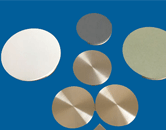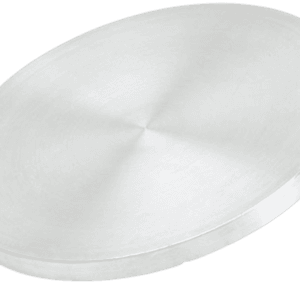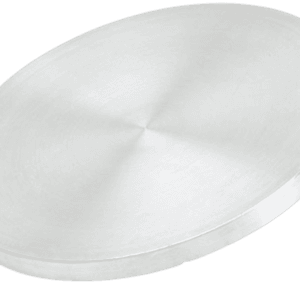| Material Type | Iron Oxide |
| Symbol | Fe3O4 |
| Color/Appearance | Black |
| Melting Point (°C) | 1597 |
| Density | 5.17 g/cm3 |
| Molecular Weight | 231.63 |
| Sputter | |
| Exact Mass | 233.7 |
Iron Oxide Sputtering Targets
Iron oxides are chemical compounds formed by the combination of iron and oxygen. There are a total of sixteen distinct iron oxides and oxyhydroxides, each playing a significant role in various geological and biological processes. These compounds are abundant in nature and have numerous industrial applications. Examples include their use as iron ores, pigments, catalysts, in thermite reactions, and in hemoglobin. One well-known form of iron oxide is rust, specifically iron(III) oxide.
Iron oxides are particularly popular in the manufacturing of affordable, durable pigments for use in paints, coatings, and colored concretes. These pigments typically come in hues from the yellow/orange/red/brown/black spectrum and are commonly referred to as “Earth” colors. When used as a food coloring agent, iron oxide is designated as E172.
Iron Oxide Sputtering Targets Overview
Purity: 99.99%
Available Shapes:
- Circular: Diameter ≤ 14 inches, Thickness ≥ 1mm
- Block: Length ≤ 32 inches, Width ≤ 12 inches, Thickness ≥ 1mm
Iron Oxide Sputtering Targets Applications
- Ferroelectric
- Gate Dielectric
- For CMOS Technology
Features of Iron Oxide Sputtering Targets
- High Purity: 99.99% minimum purity ensures superior performance.
- Custom Sizes: Available upon request for specific needs.
Manufacturing Process
- Cold Pressing – The initial step in shaping the material.
- Sintering – Enhances density and material integrity.
- Elastomer Bonding – Bonds the target to the backing plate.
- Cleaning and Packaging – Thoroughly cleaned to ensure readiness for use in vacuum environments.
- Environmental Protection – The targets are carefully shielded from contaminants during shipment.
Additional Options
- Purity: 99.99% minimum, ensuring excellent consistency and reliability.
- Custom Sizes: Smaller sizes are available for research and development applications.


 MSDS File
MSDS File



Reviews
There are no reviews yet.